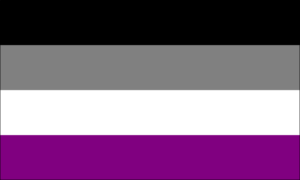Aromanticism

What it is:
Aromantic people do not experience romantic attraction to anyone. “Aro” is short for aromantic.
Why the current bill falls short:
The existing language in the bill does not cover romantic orientation at all. Romantic attraction is a separate and distinct category from sexual attraction, and the language of the Equality Act needs to recognize that.
Asexuality

What it is:
Asexual people do not experience sexual attraction to anyone. “Ace” is short for asexual.
Why the current bill falls short:
The existing language in the bill strictly enumerates three protected classes of sexual orientation: Homosexual, heterosexual, and bisexual. Asexual is not on that list.
Beyond the bill, the Bostock decision held that discrimination based on sexual orientation is unlawful sex discrimination. However, the opinion is built on the presence of attraction to others, and is silent where attraction is not present.
Pansexuality

What it is:
Pansexual people experience sexual attraction to people, regardless of gender. “Pan” is short for pansexual.
Why the current bill falls short:
The existing language in the bill strictly enumerates three protected classes of sexual orientation: Homosexual, heterosexual, and bisexual. Pansexual is not on that list.
Pansexuality is similar to bisexuality, but they are distinct identities. While it may be possible for a pansexual person to be covered by the bisexuality clause due to the similarity, such a claim would require the individual to surrender part of their identity for the sake of legal expediency. That is an unacceptable bargain to force someone to take.
Other Identities

What they are:
The understanding of human sexuality and the ways we classify ourselves is transforming almost on a daily basis. We cannot list all the variations that are seen today, so we cannot even hope to imagine how we will understand ourselves in the future.
Why the current bill falls short:
The existing bill uses language that is already obsolete given our understanding and terminology of today. It will continue to fall behind and protect fewer and fewer people as the years pass, as more and more people come to understand themselves in a way that does not fit cleanly into the categories of the past.
The bill takes an expansive and forward looking approach in its definition of gender identity. It needs to take a similar approach for its definition for sexual orientation.